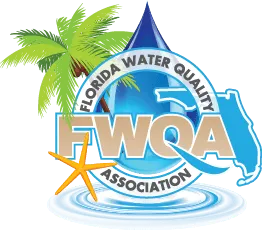At Smarter Water Solutions, we are committed to providing clean, safe, and healthy water for your family. While fluoride has been widely used in public water supplies for its dental health benefits, concerns have been raised about its potential impact on children’s health when overexposed. Below, we explore the benefits and risks of fluoride in drinking water and how you can ensure your child’s water consumption remains safe.
Benefits of Fluoride for Children
Fluoride has been added to public water supplies since the mid-20th century to help prevent tooth decay. According to the American Dental Association (ADA), fluoride strengthens tooth enamel, making it more resistant to cavities, especially in children. Studies show that water fluoridation can reduce tooth decay in children by about 25%, making it a critical public health measure in communities where access to dental care may be limited [1].
Potential Risks of Fluoride Overexposure
While fluoride offers important benefits for dental health, there are concerns about overexposure, particularly in young children. Some of the potential risks include:
- Dental Fluorosis: This condition occurs when children consume too much fluoride during the years when their teeth are still developing (up to age 8). Fluorosis can cause white streaks or spots on the teeth, and in more severe cases, it can lead to brown stains or pitting on the tooth surface [2].
- Skeletal Fluorosis: Excessive fluoride exposure over a long period can affect bones, leading to joint stiffness and pain. This condition is rare and typically occurs in areas where fluoride levels in water far exceed recommended levels [2].
- Neurodevelopmental Concerns: Some studies have raised concerns about the potential impact of excessive fluoride on children’s brain development. According to research highlighted by the National Institute of Environmental Health Sciences (NIEHS), overexposure to fluoride during early development may be linked to cognitive issues. However, these studies are still under review, and regulatory agencies such as the U.S. Environmental Protection Agency (EPA) continue to monitor safe levels of fluoride in drinking water [3].
Ensuring Safe Fluoride Levels
The EPA recommends that the fluoride concentration in drinking water be maintained at 0.7 milligrams per liter (mg/L) to maximize dental benefits while minimizing the risk of fluorosis. If you are concerned about the level of fluoride in your water, there are steps you can take to manage your child’s exposure:
- Monitor Fluoride Intake: Check with your local water supplier to know the fluoride levels in your drinking water. If necessary, consider using a water filtration system that reduces fluoride content.
- Use Fluoride-Free Toothpaste: For children under two, it’s advisable to use fluoride-free toothpaste unless otherwise recommended by a dentist.
- Consult with Your Dentist: Speak to your child’s dentist about whether additional fluoride treatments are needed, especially if your water already contains fluoride.
How Smarter Water Solutions Can Help
At Smarter Water Solutions, we offer a range of advanced water filtration systems that can help reduce or eliminate fluoride and other contaminants from your home’s water supply. Our reverse osmosis systems are particularly effective at removing fluoride, ensuring that your child gets safe, clean water for drinking and bathing.
We provide tailored solutions to meet the specific water quality needs of your home, ensuring that your family is protected from potential risks while still benefiting from essential minerals in your water.
Contact Smarter Water Solutions Today
For more information on how to reduce fluoride and other contaminants in your drinking water, contact Smarter Water Solutions at 813-929-8149. Our team of experts is ready to help you find the perfect water filtration system for your family’s health and well-being.
Bibliography
- American Dental Association (ADA). Fluoride in Water: Benefits for Dental Health. Accessed September 2023. https://www.ada.org
- Centers for Disease Control and Prevention (CDC). Dental Fluorosis. Accessed September 2023. https://www.cdc.gov
- National Institute of Environmental Health Sciences (NIEHS). Fluoride and Neurodevelopmental Concerns. Accessed June 2024. https://www.niehs.nih.gov
Smarter Water Solutions – Your trusted partner for clean, efficient, and optimized water systems!
Author: Loretta Bauman, Advocate of Wellness and Inspired Living.
![]() Water systems are designed, assembled, and packaged in the U.S.A.
Water systems are designed, assembled, and packaged in the U.S.A.






